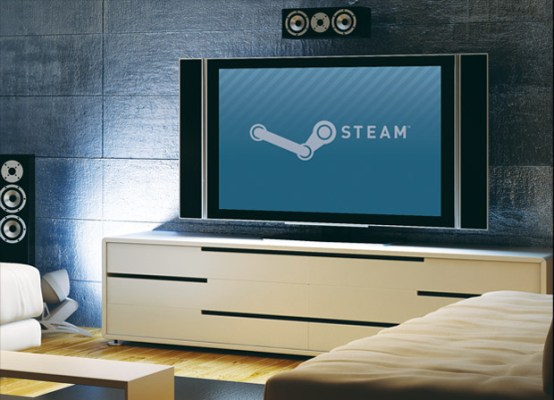As it turns out, Valve co-founder Gabe Newell gets awfully chatty when he attends award ceremonies. His appearance at the (generally awful) Spike TV Video Game Awards got him ruminating about the future of living room PCs, and ahead of today’s BAFTA Games Awards he confirmed to the BBC that Valve is working on Steam Box prototypes that will be released to testers “in the next three to four months”.
The BBC’s report is a rather brief one, but Newell was awfully candid. Beyond offering a rough timeframe for actual user testing, he also noted that the team working on the hardware was struggling with keeping the amount of heat and noise the console generated in check. It’s a common problem among the current slew of consoles, especially as gamers’ demands for pure pixel-pushing performance continue to grow — turning on the original Xbox 360 wasn’t unlike firing up a jet engine, and the fat PlayStation 3 had a tendency to make its surroundings just a bit toastier.
As always, Newell had nothing to say about what kind of hardware will be part of the Steam Box, but did allude once again to the prospect of adding a more personal dimension to how we play games. The Verge reported earlier this year that Valve was exploring ways to enhance the gaming experience by keeping tabs not only on a user’s direct inputs, but their biometric responses as well. Newell briefly revisited that notion again, this time noting that the company has yet to decide whether it will actually attempt to collect that sort of data using the controller — Valve is currently assessing multiple controller concepts, which appears to be one of the project’s major sticking points for the time being.
Nebulous though it may be, it could be that sort of deeply personal angle that ultimately sets Valve’s console apart from the likes of Sony, Nintendo, and Microsoft — players who have already spent years vying for control of our living rooms. Newell’s vision is of a reactive gaming experience, one that grows and changes depending on what players are going through at that moment. He uses the physiological effects that horror games like Left 4 Dead can produce as an example:
“You need to actually be able to directly measure how aroused the player is – what their heart rate is, things like that – in order to offer them a new experience each time they play.”
It’s far too early to tell whether or not Valve’s approach to living room gaming will pan out, but one thing seems clear — Valve is building up the Steam Box to be a gamer’s game console, and players like Sony and Nintendo would do well to stay on their toes.
